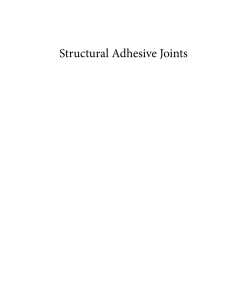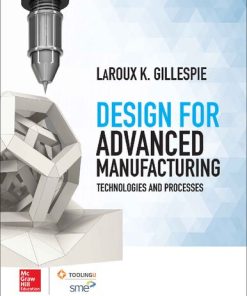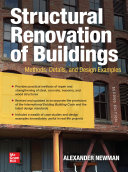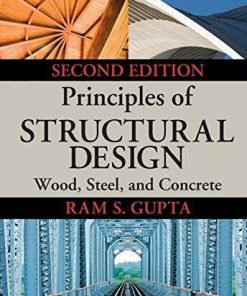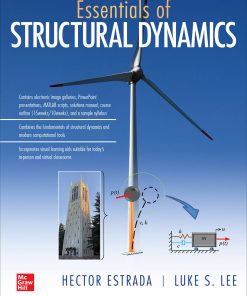Design and Manufacturing of Structural Composites 1st edition by Lee Harper, Mike Clifford 0128191613 9780128191613
$50.00 Original price was: $50.00.$25.00Current price is: $25.00.
Design and Manufacturing of Structural Composites 1st edition by Lee Harper, Mike Clifford – Ebook PDF Instant Download/DeliveryISBN: 0128191613, 9780128191613
Full download Design and Manufacturing of Structural Composites 1st edition after payment.
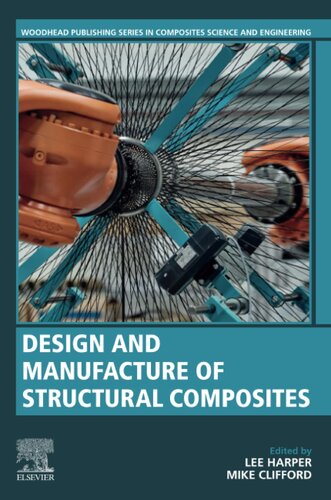
Product details:
ISBN-10 : 0128191613
ISBN-13 : 9780128191613
Author : Lee Harper, Mike Clifford
Design and Manufacture of Structural Composites provides an overview of the main manufacturing challenges encountered when processing fibre-reinforced composite materials. Composites are unique in that the material is created at the same time as the structure, forming a very close link between the constituents, the manufacturing process and the resulting mechanical performance. This book takes an in-depth look at material choices and the intermediate steps required to convert different fibre and matrix combinations into finished products. It provides an insight into recent developments for each of the manufacturing processes covered, addressing design, cost, rate and mechanical performance.
Topics covered include an introduction to composite materials, material preforming and conversion, moulding, digital design and sustainability, which addresses waste reduction, disassembly and fibre recovery. This book has been developed primarily as a teaching resource with contributions from leading experts in the field. The content has evolved from courses given by the authors to mechanical engineering and materials science students, at both undergraduate and postgraduate levels. It also draws upon experience gained during research projects and from leading industry experts. It therefore provides non-specialists with a valuable introduction to composite manufacturing techniques, helping to determine the most suitable manufacturing routes and to understand the challenges associated with the production of high-performance composite components.
Design and Manufacturing of Structural Composites 1st Table of contents:
Section A: Introduction to composite materials
1: Introduction
Abstract
1.1: What is a composite?
1.2: Composites manufacturing
1.3: Where is the industry heading?
1.4: Summary
References
2: Reinforcing fibres
Abstract
2.1: Introduction
2.2: Types of fibre reinforcement
2.3: Fibre coatings
2.4: Fibre forms, nomenclature, properties, and testing
2.5: Sustainability, recycling, and reuse
2.6: Summary
References
3: Resins for structural composites
Abstract
Acknowledgements
3.1: Introduction
3.2: Thermosetting resins
3.3: Thermoplastic resin systems
3.4: Resin characterisation
3.5: Property comparison of resins
3.6: Summary
References
4: Intermediate composite materials
Abstract
4.1: Introduction
4.2: Dry intermediate materials
4.3: Thermoset matrix composite intermediates
4.4: Thermoplastic matrix composite intermediates
4.5: Cores
References
Section B: Material preforming and conversion
5: Two-dimensional to three-dimensional dry fibre preforming
Abstract
5.1: Introduction
5.2: Fabric materials for preforming
5.3: Fabric forming techniques
5.4: Scenarios for defect mitigation
5.5: Summary
References
6: Automated fibre placement
Abstract
6.1: Introduction
6.2: Current challenges
6.3: Next-generation AFP/ATL
6.4: Development areas and future research
References
7: Braiding and filament winding
Abstract
7.1: Introduction
7.2: Braiding
7.3: Filament winding
7.4: Hybrid braid-winding
7.5: Structural performance of braided and filament-wound composites
7.6: Summary
References
8: Three-dimensional woven composites
Abstract
8.1: Introduction
8.2: Definition, classification, and motivation of 3D woven preforms
8.3: Manufacturing of 3D woven preforms
8.4: Influence of microstructural parameters on defects in 3D woven composites
8.5: Performance and failure mechanisms of 3D woven composites
8.6: Machine developments for 3D woven composites
8.7: Summary
References
Section C: Moulding
9: Autoclave and out-of-autoclave processing of prepregs
Abstract
9.1: Introduction
9.2: Prepreg processing
9.3: Curing equipment and tooling
9.4: Prepreg materials
9.5: Process design
9.6: Challenges
9.7: Summary
References
10: Liquid composite moulding
Abstract
10.1: Introduction
10.2: Theory
10.3: Processing properties of reinforcement
10.4: Processing properties of matrix
10.5: Implementation
10.6: Summary
References
11: Compression moulding
Abstract
11.1: Introduction
11.2: Overview of compression moulded composite materials and their associated processing routes
11.3: Compression moulding challenges
11.4: Current trends and outlook
References
12: Thermoplastic stamp forming
Abstract
Acknowledgments
12.1: Thermoplastic forming processes and process windows
12.2: Materials and deformation mechanisms
12.3: Material characterisation
12.4: Process modelling and sensitivity analysis
12.5: Forming-induced defects
12.6: Design for manufacturing
12.7: Current industrial practice
References
13: Composite injection overmoulding
Abstract
13.1: Injection moulding process
13.2: Composite injection overmoulding–Background
13.3: Composite injection overmoulding process
13.4: Material characteristics
13.5: Interface formation in injection overmoulding
13.6: Common issues in composite injection overmoulding
13.7: Summary
References
Section D: Digital design
14: Design for manufacture
Abstract
14.1: Introduction
14.2: Design for manufacturability
14.3: Manufacturing-informed performance
14.4: Typical phenomena in composites manufacturing
14.5: Continuous fibre composites
14.6: Discontinuous fibre composites
14.7: Future trends
References
15: Process simulation: Fabric forming
Abstract
15.1: Introduction
15.2: Simulation frameworks
15.3: Fabric material modelling
15.4: Simulation for process design
15.5: Summary
References
16: Process simulation: Moulding processes
Abstract
16.1: Introduction
16.2: Short-fibre reinforced polymers
16.3: Increasing fibre length: From SMC to RTM
16.4: Prepreg compression moulding
16.5: Summary
References
17: Digital factory
Abstract
17.1: Introduction to digital factories and digital twins
17.2: Simulation of factories
17.3: Instrumentation and measurement
17.4: Current application in structural composites
17.5: Summary
References
18: Cost, rate, and robustness
Abstract
18.1: Introduction
18.2: Technical cost modelling
18.3: Cost model calculation
18.4: Cost analysis and examples
18.5: Investment planning and business economics
18.6: Summary
References
Section E: Reduce, reuse, recycle
19: Materials waste reduction
Abstract
Acknowledgements
19.1: Introduction
19.2: Composite consumption and waste generation–By sector
19.3: Sources of composite waste
19.4: Impact of process selection on material yield
19.5: Strategies for improving material yield
19.6: Summary
References
20: Disassembly
Abstract
20.1: Introduction
20.2: Drivers for disassembly
20.3: Design for disassembly
20.4: Disassembly technologies
20.5: Concluding remarks
References
21: Fibre recovery and re-use
Abstract
21.1: Introduction
21.2: Requirements for end use applications
21.3: Recovery processes
21.4: Properties of recovered fibres
21.5: Conversion processes
21.6: Achievable mechanical properties
21.7: Discussion and future prospects
People also search for Design and Manufacturing of Structural Composites 1st:
design and analysis of composite structures pdf
design and analysis of composite structures
composite structure manufacturing
design and manufacture of composite structures
structural composites examples
Tags: Design, Manufacturing, Structural Composites, Lee Harper, Mike Clifford
You may also like…
Engineering
Engineering - Industrial Engineering & Materials Science
Uncategorized
Principles of Structural Design: Wood, Steel, and Concrete, Second Edition – Ebook PDF Version 2nd
Engineering - Engineering Technology
Essentials of Structural Dynamics Hector Estrada And Luke S. Lee
Biology and other natural sciences - Biotechnology




